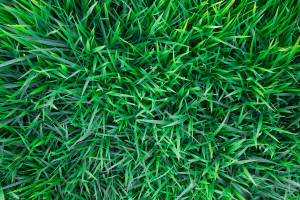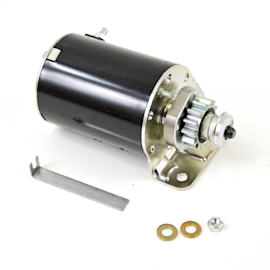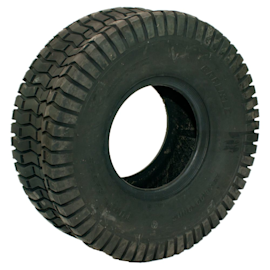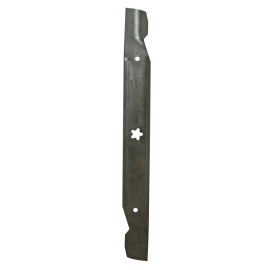- Kenmore refrigerator water filters
- Whirlpool refrigerator water filters
- Samsung refrigerator water filters
- GE refrigerator water filters
- LG refrigerator water filters
- Frigidaire refrigerator water filters
- KitchenAid refrigerator water filters
- Maytag refrigerator water filters
- Kenmore Elite refrigerator water filters
- Estate refrigerator water filters
- GE Profile refrigerator water filters
- Amana refrigerator water filters
- Bosch refrigerator water filters
- Dacor refrigerator water filters
- Electrolux refrigerator water filters
How to mow a lawn for healthier grass


Mowing seems like such a simple task—just fire up the lawn mower, go back and forth across the whole yard, wait a week, and repeat. But improper mowing is the most common reason a lawn loses its good looks. Fortunately, encouraging a healthy lawn requires just three simple mowing practices.
If you're having problems with your mower, check out our troubleshooting advice and repair guides.
Warning: Before working on your lawn mower, disconnect the spark plug (or remove the key if you have a battery-powered mower) so it can't start accidentally.
Don't cut off a lot
Grass struggles to recover when you cut off more than a third of its height in a single mowing. That means if your grass is 3 inches tall, mow it to no shorter than 2 inches. A one-time, too-short mowing won't do permanent damage, but repeated short mowing weaken the lawn, leaving room for weeds to invade.
For a few weeks in spring, when grass is growing fast, you might have to mow every 3 or 4 days. (If you hate mowing that often, skip the spring fertilizer treatment.) When growth slows in the heat of summer, you can get away with mowing only every 7 to 10 days.
Tip: An easy way to gauge how much to cut is to mow a swath about 4 feet long, then compare the height of the cut swath to the uncut grass beside it. Adjust the mower height accordingly.
Mow tall
Tall grass shades the ground, reducing water evaporation from the soil and discouraging weeds. Keeping grass at the tall end of its recommended height range is especially important in the hottest, driest part of summer. In spring, you can keep it shorter if you like.
Ideal height depends on the grass type:
Common bermuda grass 1 to 2 inches
Fescue 2 to 3.5 inches
Kentucky bluegrass 2 to 3.5 inches
St. Augustine 2 to 4 inches
Zoysia 0.5 to 1.5 inches
Use a sharp mower blade
A dull mower blade frays the tips of the grass , which then turn brown and makes the lawn look dry. How often you need to sharpen the blade varies, but once a month is reasonable.
Replace the blade every year or two, or anytime a rock or other hard object takes a big chunk out of the blade. Over time, sharpening removes enough of the blade that it no longer lifts the grass well; it can also throw off the balance of the blade, causing the mower to vibrate.
Most common symptoms to help you fix your riding mowers & tractors
Choose a symptom to see related riding mower and lawn tractor repairs.
Main causes: punctured tire or inner tube, leaky valve stem, damaged wheel rim…
Main causes: clogged carburetor, damaged flywheel key, dirty spark plug, stale fuel, improper valve lash, engine needs a…
Main causes: worn or broken ground drive belt, bad seat switch, transaxle freewheel control engaged, transaxle failure, …
Main causes: damaged tie rods, bent or worn wheel spindle, worn front axle, damaged sector gear assembly…
Main causes: engine overfilled with oil, leaky head gasket or sump gasket, damaged carburetor seals, cracked fuel pump, …
Main causes: shift lever needs adjustment, neutral control needs adjustment…
Main causes: worn or broken blade belt, broken belt idler pulley, blade clutch cable failure, bad PTO switch, damaged ma…
Main causes: damaged cutting blade, worn deck pulley, damaged mandrel pulley, loose fasteners on mower deck components…
Main causes: faulty battery, bad alternator…
Most common repair guides to help fix your riding mowers & tractors
These step-by-step repair guides will help you safely fix what’s broken on your riding mower or lawn tractor.

How to replace the starter motor on a riding lawn mower
If you hear the solenoid click but don’t hear the starter motor spin when you turn the key, follow these steps to replac…
Repair difficulty
Time required
30 minutes or less

How to replace a riding lawn mower rear tire
Your mower can’t run on a damaged rear tire. Here’s how to install a new one.…
Repair difficulty
Time required
60 minutes or less

How to replace a riding lawn mower blade
If a blade on your mower is dull or bent, replace it following the steps in this repair guide.…
Repair difficulty
Time required
30 minutes or less
Effective articles & videos to help repair your riding mowers & tractors
Use the advice and tips in these articles and videos to get the most out of your riding mower or lawn tractor.

Do you know a lawn tractor from a garden tractor? Take a look at the key differences and discover how each handles your …

Wondering when to mow your lawn for the best results? Timing matters more than you might think. Discover the best time o…

Learn about all the convenient features on our Sears PartsDirect website that make your parts purchases easier.…